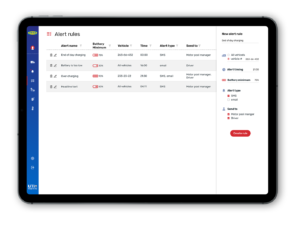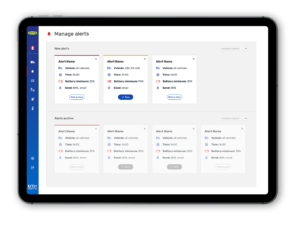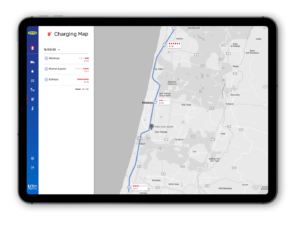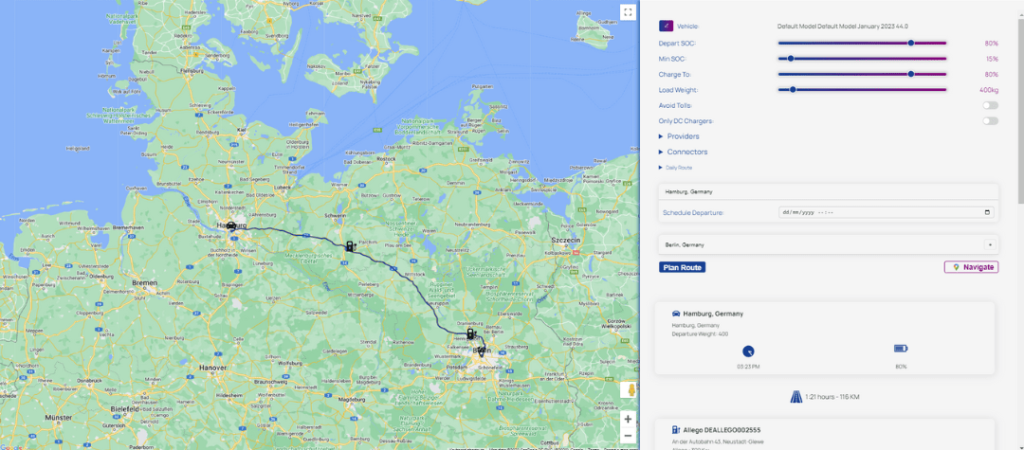How Does it Work?
1. Collecting and gathering data
- Vehicle Model
- Charger type and speed
- Temperature, Wind
- Traffic, Distance, Elevation, Load
- Driver behavior and regeneration (Unique AI modeling)
- Dispatching – multiple stops
- Full fleet optimization
- Mixed / Hybrid fleets
- Priority in stops
- Driver preferences

2. AI algorithms learning behavior and needs
- Driver
- Vehicle
- Agenda
- Calendar
- Favoring home chargers or specific brands
- Dispatcher

3. Getting info from highly achieving machine learning model
Use high accuracy of SOC (State of Charge) or the Electric Vehicle (EV) battery to get:

- personalize specific vehicles
- solutions to complicated fleet multiple-stop routing

4. Routes that are tailored based on optimal and dynamic criteria (which, where & when)
- Battery prediction – points A to B
- Vehicles type data
- AI adaptive model data
- Range prediction
- Route optimization + charging optimization
- Multiple vehicle optimization
- Charging station connectivity and mapping

1. Collecting and gathering data
Vehicle Model | Charger type and speed | Temperature | Wind | Traffic | Distance | Elevation | Load | Driver behavior and regeneration (Unique AI modeling) | Dispatching – multiple stops | Full fleet optimization | Mixed / Hybrid fleets | Priority in stops | Driver preferences
2. AI algorithms learning behavior and needs
Driver | vehicle | agenda | calendar | favoring home chargers or specific brands | dispatcher
3. Getting info from highly achieving machine learning model
Use high accuracy of SOC (State of Charge) or the Electric Vehicle (EV) battery to get:
- personalize specific vehicles
- solutions to complicated fleet multiple-stop routing
4. Routes that are tailored based on optimal and dynamic criteria (which, where & when)
Battery prediction – points A to B | Vehicles type data | AI adaptive model data | Range prediction | Route optimization + charging optimization | Multiple vehicle optimization | Charging station connectivity and mapping



